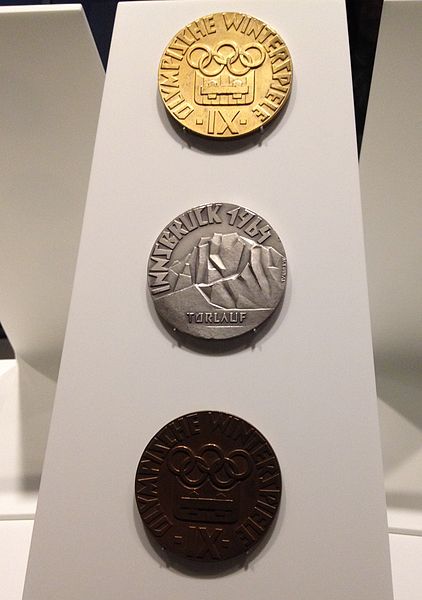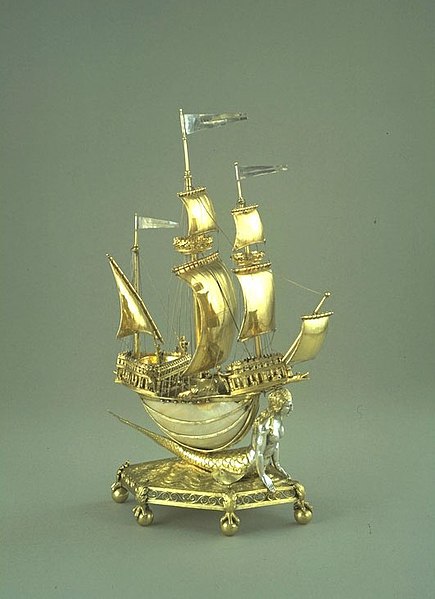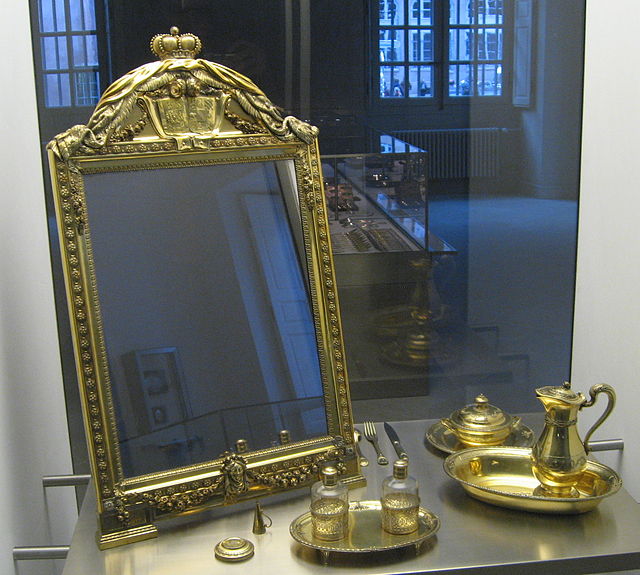A gold medal is a medal awarded for highest achievement in a non-military field. Its name derives from the use of at least a fraction of gold in form of plating or alloying in its manufacture.
The gold, silver and bronze medals of the 1964 Olympic Winter Games (Olympic Museum).
A medal on a ribbon designed to be worn around the winner's neck.
At the 1896 Summer Olympics, the winners received a silver medal. Since 1904, the winners receive a gold medal, the second-place finishers receive a silver medal and the third-place finishers receive a bronze medal.
Silver-gilt or gilded/gilt silver, sometimes known in American English by the French term vermeil, is silver which has been gilded with gold. Most large objects made in goldsmithing that appear to be gold are actually silver-gilt; for example most sporting trophies and many crown jewels are silver-gilt objects.
The Burghley Nef, silver-gilt (with sections ungilded), and nautilus shell, 1527–1528, France, V&A Museum
Silver gilt toilet service by Johann Jacob Kirstein, 1786
A vermeil wine cooler manufactured in 1810 by Paul Storr is located in the Vermeil Room of the White House.
Sassanid silver-gilt shield-boss, 7th century







